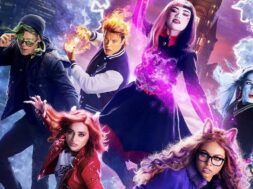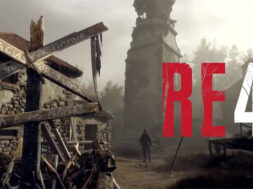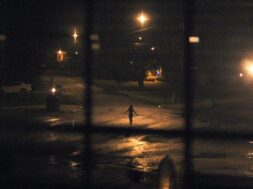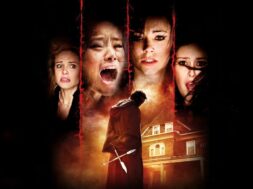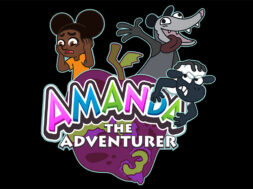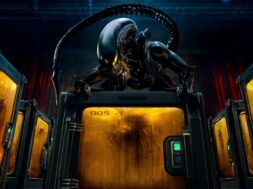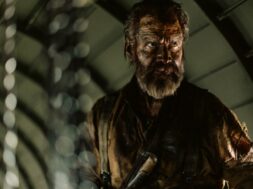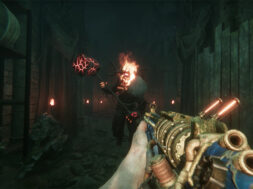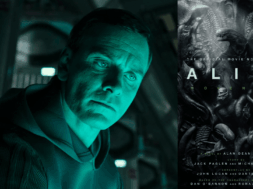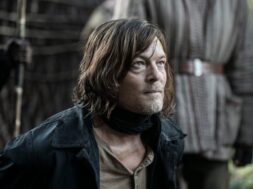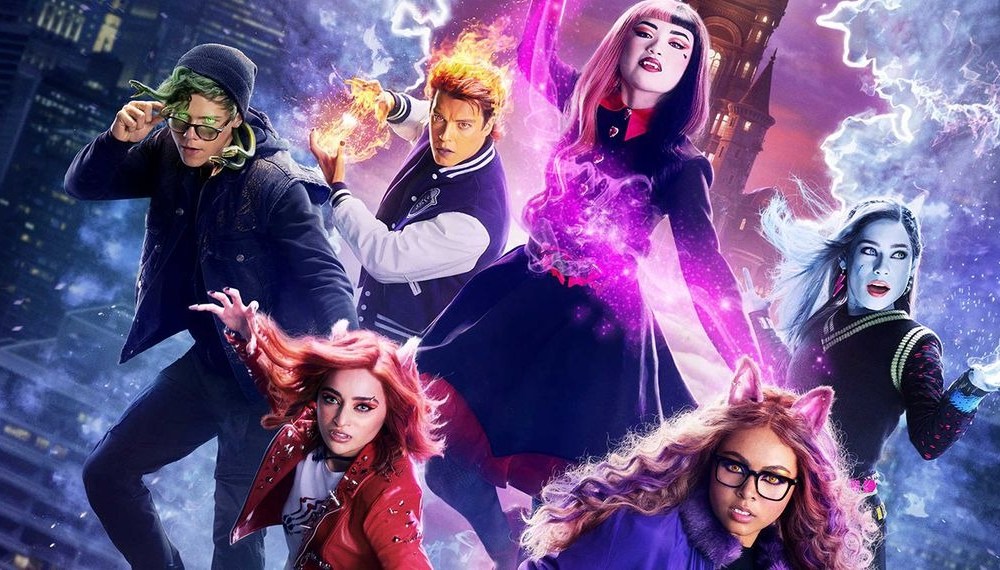
Alfred Hitchcock’s The Birds has become such an acknowledged classic and even cultural touchstone that it is easy to forget how revolutionary it was upon its 1963 release. For the Master of Suspense himself, it was a departure in many ways from his previous work while still a testament to his craft and devotion to “pure cinema.” It all but single-handedly created, or at least redefined, an enduring horror subgenre—the animal attack film. Finally, in creating this subgenre, The Birds explores themes of humankind’s place in the world and the unpredictable power of nature. It is also a particularly meaningful film for me as it was my first Hitchcock film and was introduced to me by my grandmother, who was a great fan of classic cinema in general and Alfred Hitchcock in particular. I saw the film during a memorable stay at her home when I was around ten or eleven years old and I have never gotten over my first experience with it or the fascination with Hitchcock’s work that it inspired.
Perhaps because of his moniker and reputation as The Master of Suspense (which in ensuing years has been applied to any number of horror filmmakers and authors), or because his most famous film for decades was Psycho, a huge international hit that changed the way films were made and exhibited, Hitchcock is often classified as a horror director, especially by those less familiar with the breadth of his work. In reality, only a handful of his films could be classified as horror or even horror adjacent. The vast majority of his movies are about ordinary people drawn into webs of intrigue dealing with national and international crime and espionage. The Birds, however, fits firmly into the genre and contains some of the Master’s most intense, frightening, and bloody moments.
Also, unlike most of Hitchcock’s films in which humans are the primary villains, here he taps into a primal fear—the power of nature. In exploring this, he takes a great deal of time to get to know the human characters, whose desires and fears are central to their relatability to the audience. And so, one of the greatest features, and for some a frustration, is how long the story takes to develop its characters and setting before a single bird attack occurs. Rather than a device within the plot, the Hitchcockian “bomb under the table” in The Birds is the title itself. When the birds finally do begin their rampage, it is all the more shocking because we know they are coming but have no idea when. This makes the “slow burn” nature of the film key to its effectiveness. By the time the bird attacks begin to happen, we are very familiar with the characters and like them a great deal.
Except for the ominous title sequence created by the great Saul Bass and a circling flock of birds in a San Francisco city square in the opening moments, The Birds plays out like a relationship drama for about forty-five minutes of its two-hour runtime. Tippi Hedren is immensely likable as the alluring and mischievous Melanie Daniels, the latest iteration of the cool “Hitchcock Blonde” in the tradition of Grace Kelly, Kim Novak, and Eva Marie Saint. Rod Taylor also fits the Hitchcock bill as Mitch Brenner, the young, but not too young, handsome professional with the strong mother figure in his life. Melanie develops a friendship with Annie Hayworth (Suzanne Pleschette), the “Midge” (Barbara Bel Geddes’ character in 1958’s Vertigo) of the film who has a clear attraction to the leading man, though he is now drawn to the “cool blonde.” The precocious kid sister, Cathy Brenner, played by a very young Veronica Cartwright over fifteen years before her roles in Invasion of the Body Snatchers (1978) and Alien (1979), is not too far removed from the younger sister Ann in Shadow of a Doubt (1943). Though all these characters can be found in various forms in much of Hitchcock’s work, they are presented and developed differently in The Birds. Even the Hitchcock trope of the “domineering mother” turns out to have much more depth and likability in Lydia Brenner, played by the great Jessica Tandy, than practically any other film in his oeuvre.
When the first bird attack does come, it is out of nowhere, not only shocking Melanie, who is attacked, but Mitch, and by extension the audience, who witnesses it. It is a single bird, a gull, who drops out of nowhere and pecks Melanie on the forehead, drawing blood, as she steers an outboard motorboat toward Mitch as he waits on the dock originally intending to confront her for the mild prank she just pulled on him. The next attack is unseen, but we see the results in a dead gull on Annie’s porch after she and Melanie hear a loud “thunk” at the door. From there, the attacks become more intense as Cathy’s birthday party is terrorized by gulls and crows, a flock of sparrows comes down the chimney of the family home, and Lydia discovers the corpse of her neighbor, his eyes pecked out in perhaps the bloodiest image in Hitchcock. The special effects (a combination of process shots, trained birds, and puppets) used to create these scenes were cutting edge for the time and still hold up surprisingly well today, but ultimately it is how well we know the people that are being attacked that makes them most effective.
Another key reason the suspense works so well in The Birds is Hitchcock’s devotion to his doctrine of “pure cinema.” Simply put, pure cinema is the combination of images and sound effects without dialogue or score precisely calibrated to create maximum impact. Despite a history of great composers as collaborators, Hitchcock preferred certain scenes to play out without score. He originally intended the shower scene in Psycho to play without music, but maestro Bernard Herrmann wrote something anyway. After hearing it against the images, Hitchcock reportedly doubled his salary. In the case of The Birds, however, Hitchcock wanted the entire picture to play without score and hired Herrmann as “sound consultant.” The result is a kind of “sound effects score” using the flapping and shrieking of the birds to punctuate and underscore the emotional power of the images. One of the great examples of pure cinema in the entire Hitchcock canon is the scene in which Melanie waits outside the school for Cathy. As she waits, crows gather on the jungle gym behind her. Because of previous sequences, we know that no one is safe in this film, including children, and the ensuing attack remains one of the great horror passages in all of film history.
This only heightens in a sequence that comes a few minutes later as the birds devastate the entire town of Bodega Bay. In one of the great moments of all time, we are given a “God’s eye view,” with the highest overhead shot that Hitchcock ever employed, as birds one by one enter the frame descending toward the town. Chaos ensues as gulls, crows, and more slam into the windows of a phone booth, peck and bite at screaming townspeople, and cause a gasoline spill that leads to a gigantic fire. It is interesting that the filmmakers then move from the widest scale destruction of the movie to end on a far more intimate note when Melanie is attacked in the attic of the Brenner home. According to Hedren, she told the director that she had to have some kind of motivation to go into that attic. “Why would I go in there?” she asked. His response: “because I tell you to.” This was not atypical of the director who was often more interested in the technical aspects of his films, hiring actors he knew could do the job without needing too much guidance from him. He had little patience for even the slightest whiff of method acting, even something so basic as character motivations.
What is revolutionary about the animal attacks in The Birds is that they are just birds. They are not giant radioactive mutants like the ants in Them! (1954), the spider in Tarantula (1955), or the monstrosity in The Deadly Mantis (1957). There is also no motive or reason given for their sudden turn upon humanity. This set a trend for animal attack films to follow. Willard (1971), Frogs (1972), Phase IV (1974—the only feature film directed by frequent Hitchcock collaborator Saul Bass), Ants (1977), The Swarm (1978), Roar (1981—also starring Tippi Hedren), Deadly Eyes (1982), Arachnophobia (1990), and many more clearly owe some inspiration to The Birds. Of course, in 1975, the greatest heir to the kind of animal attack movie created by The Birds—Jaws, created a slew of imitators in its wake as well. In all these films, the animals don’t necessarily act exactly as they would in reality, but it is not entirely implausible. There is an immediacy to the danger that we, the viewers, can relate to.
As humans, we like to believe that we are the masters of the universe. That we have “tamed” nature and broken it to our will. This despite frequent reminders that we are so small against the awesome power of the natural world. Films like The Birds go a long way to remind us of that fact. For many years, my family and I have spent a week in Cannon Beach, Oregon and for the last few I have gotten up before sunrise for an early morning walk on the beach. I have found that an especially peaceful and centering time. This year, however, we arrived in the town to learn that a cougar had found its way onto the gigantic Haystack Rock just off the shore and did not seem all that interested in leaving. The first thing that sprang to my mind?—The Birds. Even though it was soon reported that the cougar had made its way back to the woods, I decided to forego my morning walks this year; it just seemed like a good idea. You just never know.
This kind of uncertainty is illustrated so powerfully by the closing scene of the film which takes place in the early morning. After Melanie is discovered by Mitch, covered with blood and lacerations from her ordeal in the attic, they look outside to find the birds, hundreds of them, just sitting there. They carefully open the door and find that the birds do not stir. They just wait. Slowly, the remaining members of the central cast make their way to the waiting car with little incident beyond a bite at Mitch’s finger that gets a little too close to one of the crows. They all make it to the car and begin to drive off. And the birds watch and wait. But we know that at any moment…that all could change.
In Bride of Frankenstein, Dr. Pretorius, played by the inimitable Ernest Thesiger, raises his glass and proposes a toast to Colin Clive’s Henry Frankenstein—“to a new world of Gods and Monsters.” I invite you to join me in exploring this world, focusing on horror films from the dawn of the Universal Monster movies in 1931 to the collapse of the studio system and the rise of the new Hollywood rebels in the late 1960’s. With this period as our focus, and occasional ventures beyond, we will explore this magnificent world of classic horror. So, I raise my glass to you and invite you to join me in the toast.
